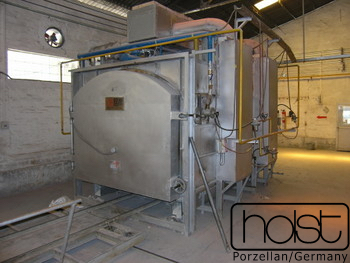Block kiln
Block kiln
In addition to various drying chambers and drying methods, there are basically 2 types of porcelain kilns available for porcelain production, which achieve glost firing above 1,320 °C.
- The Block kiln
- The Tunnel kiln
Today, both types are gas-powered in modern plants and equipped with heat recovery systems. Porcelain firing with coal is all but extinct and is giving way to modern kilns.
The use of tunnel or block kilns is essentially determined by the intended production quantities, which in turn are determined by the production capacities of the different production methods (rolling/turning/casting/pressing/pressure presses). As a rule of thumb, the larger a factory or the higher the production volume of similar articles of different body shapes, the more profitable the use of a tunnel kiln.

The use of one or more block kilns, on the other hand, cannot compete with the firing efficiency of a tunnel kiln, but offers a high degree of flexibility with regard to the quantities to be produced. A bloc kiln can be switched on and off quickly and easily in line with the order situation. Since a block kiln can be regulated more precisely than a tunnel kiln, the production of taught porcelain is more precise and with considerably less shrinkage.
